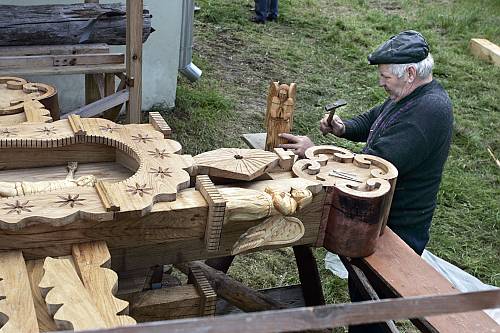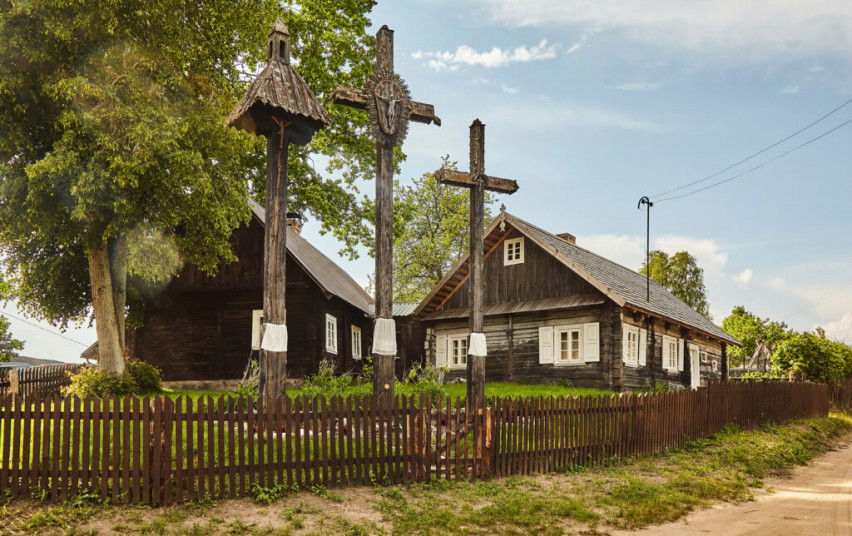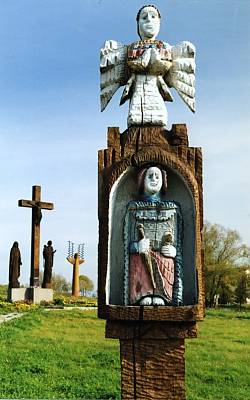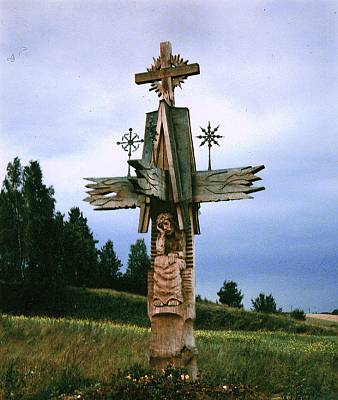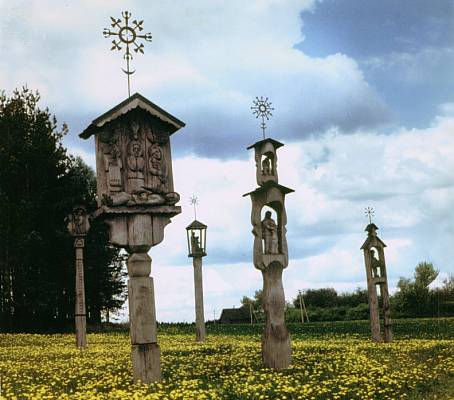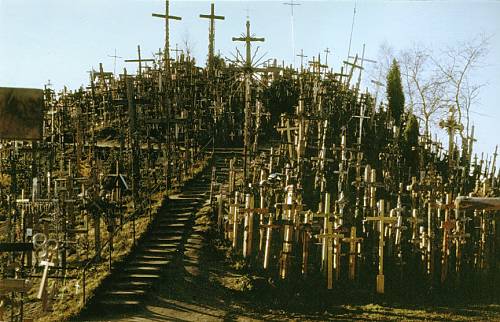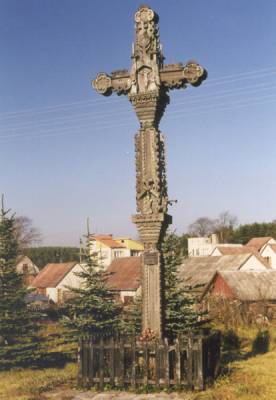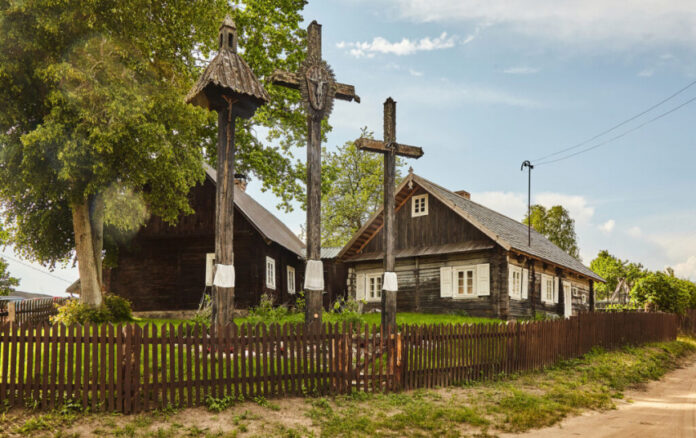
Photos: Crosses – Photos from the Lithuanian Folk Culture Centre
Cross-crafting (kryždirbystė in Lithuanian) is the reason Lithuania has been called the “Land of Crosses”, and refers to the widespread tradition of making crosses and altars, as well as the consecration of these crosses and the rituals associated with them. The carved crosses are linked to Catholic ceremonies and harvest celebrations. Once the cross is consecrated by a priest, it acquires a sacred significance. Such crosses became the symbol of national and religious identity with its incorporation into the orthodox Russian Empire in the nineteenth century. Their symbolic role was reinforced under the Soviet regime, despite the fact that the crosses were officially banned. Cross crafting was entered in the UNESCO Representative List of the Intangible Cultural Heritage of Humanity in 2008.
The crosses usually measure between one and five metres high and are often adorned with a small roof, floral or geometric decorations, and occasionally bear small statues. Statues of the Virgin Mary and various saints are often called upon to aid people in distress. The crosses are placed on roadsides, at the entrance to villages, near monuments and in cemeteries. A range of offerings are made, especially items of food, rosaries, money or coloured scarves (for a wedding, for example) or aprons, asking for fertility. The crosses are also an important meeting place in a village and a symbol of the unity of the community.Today, as in the past, cross crafting is not taught in any school but is handed down through non-formal education.
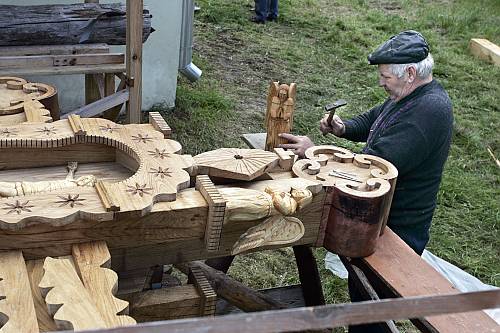
Cross crafting is more than a traditional craft, it is a phenomenon of folk culture, encompassing the entire life of a monument: from idea to location, choice of crafter and his/her creative journey, through to installation, blessing, visitations, and community presence, until it decays, then is burned and replaced.
Lithuanian crosses are known for their infinite variety – as crosses, shrines, roofed posts populated with statues of saints, and as such they transcend the status of small-scale architectural monuments, coming to life through faith, ritual and custom. Cross-crafting is a synthesis of craft, art and faith with elements of architecture, sculpture, metalwork and painting, honouring religion, mythology and Lithuanian history. During periods of war, revolution, and occupation, crosses were often built in honour of heroes of dramatic events. Despite various restrictions and prohibitions, cross-crafting has survived through the ages as a symbol of national identity and is an integral part of the Lithuanian landscape.
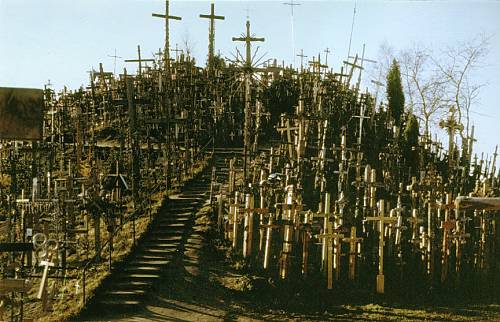
To commemorate 2020 as the year of Folk Art, the secretariat of the Lithuanian National UNESCO Commission, together with the Lithuanian Cultural Reseach Institute, created a digital map of crosses in Lithuania.
The iconic Hill of Crosses in northern Lithuania, near Šiauliai, is the most popular site for pilgrims and tourists for its impressive collection of old and new, simple and ornate crosses.
With information from alkas.lt, ich.unesco.org , kryzdirbysteskelias.lt
























